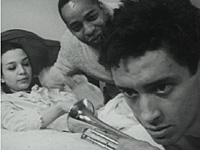|
 |
|
 |
| |
| |
| |
| |
| |
| |
| |
Campus: Kensington Campus
| |
| |
Career: Undergraduate
| |
| |
Units of Credit: 6
| |
| |
| |
| |
Indicative Contact Hours per Week: 3
| |
| |
Equivalent: THST1101
| |
| |
| |
| |
| |
 |
|
 |
Description
Introduces the basic principles of and analytic vocabulary for the study of theatrical performance.
Learning Outcomes
After participating in the lectures, tutorials and project; reading recommended materials and satisfactorily completing all assessment tasks, you should be able to:
- arefully describe and interpret a theatre event in terms of its multiple signifying elements and their complex interactions; use key semiotic terms and related concepts such as ‘sign/signifier/signified’, ‘denotation’, ‘connotation’, ‘proxemics’, and ‘kinesics’ when reading and writing about the stage event
- Analyse relationships between (a) theatre events, texts, practices and theories, and (b) their social and historical contexts
- Discuss the approaches of key practitioners and theorists in twentieth-century theatre to performance making and audience reception Compare and contrast some of the aims and methods of twentieth-century theatre and contemporary performance makers
- Plan and carry out the group-created research for and presentation of a Practical Research Project
- Read academic texts with critical understanding; access information and resources relevant to theatre and performance; follow the conventions of academic writing i.e. referencing and quotation systems; and work in an effective, self-motivated way in a university environment
Assessment
- Tutorial Participation - 10%
- Performance analysis (1,200 words) - 20%
- Essay (2000 words) - 40%
- Group practical project , including a presentation (20%), plus peer review and self-evaluation (10%)
|



